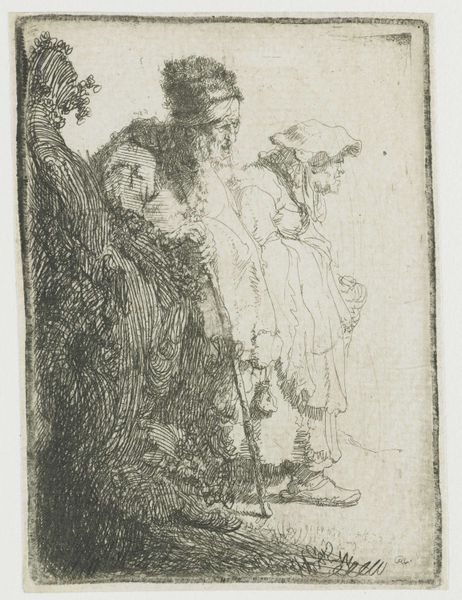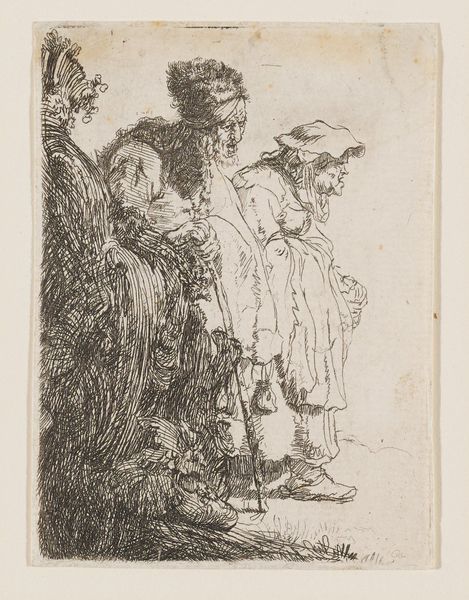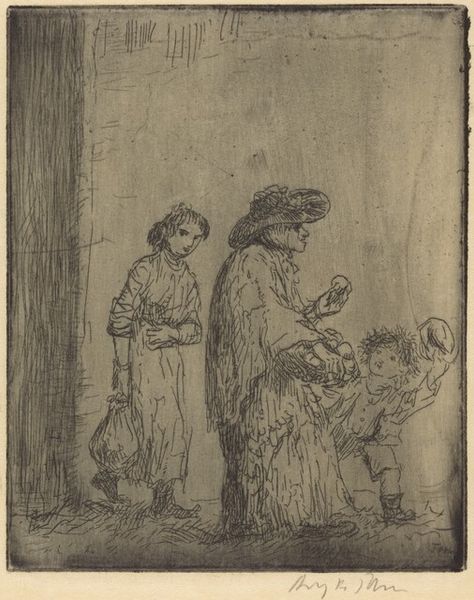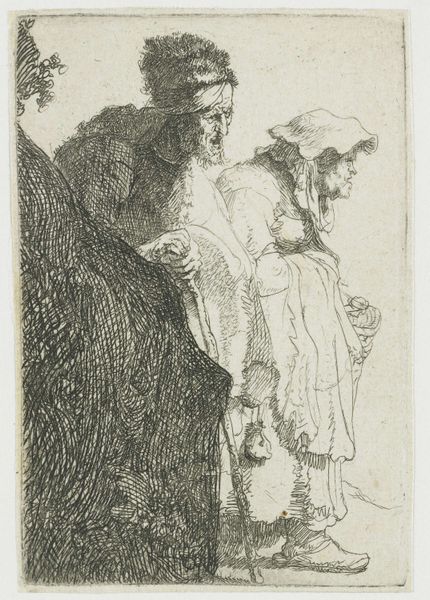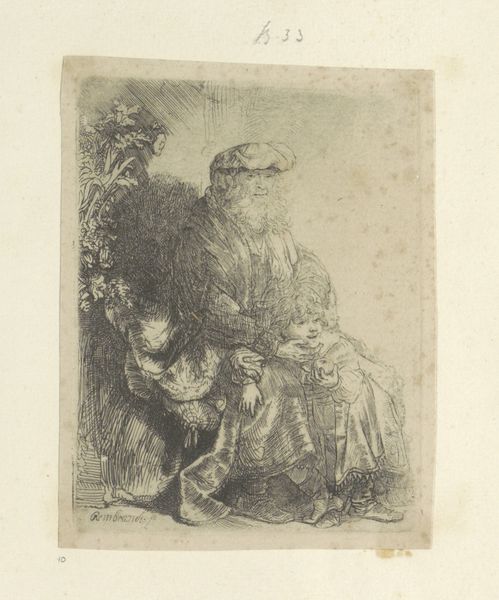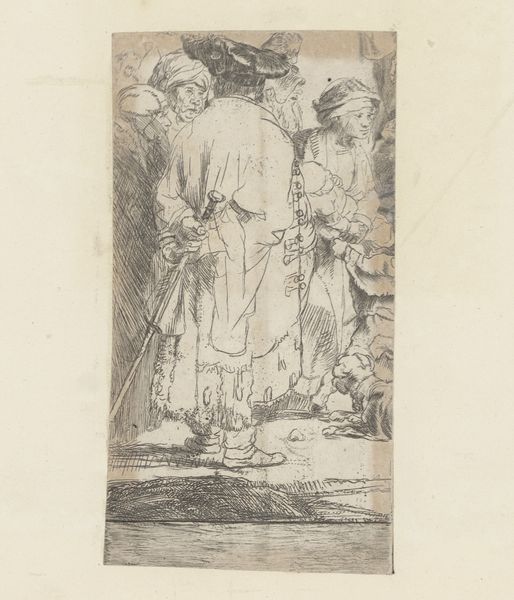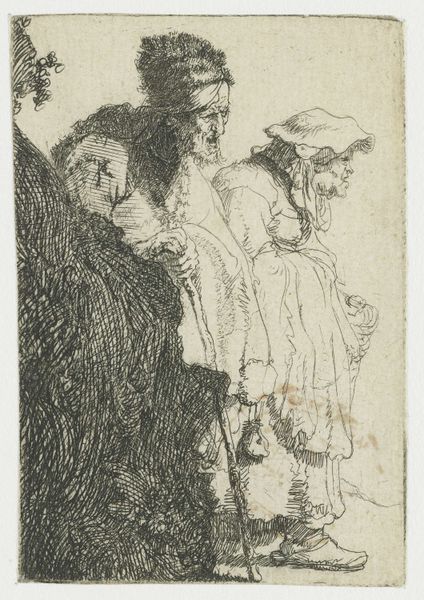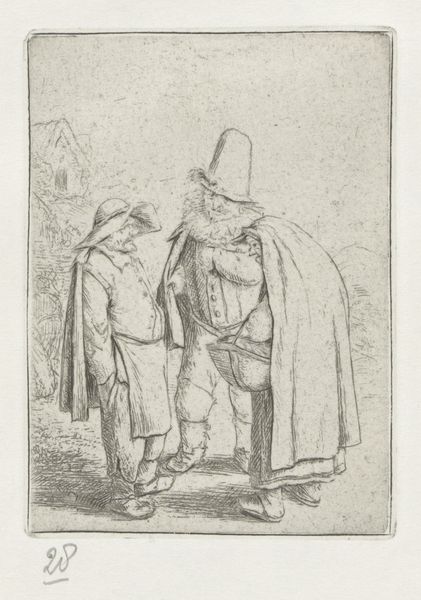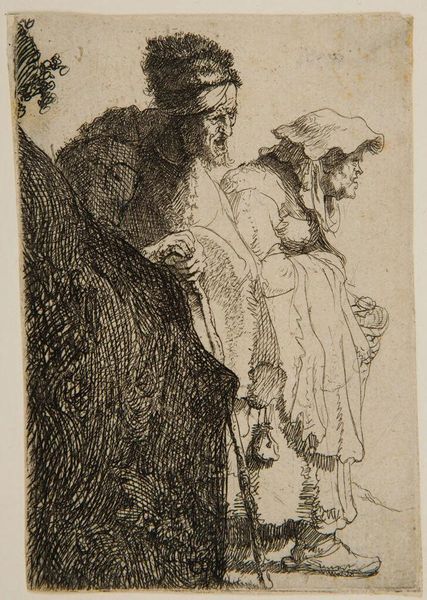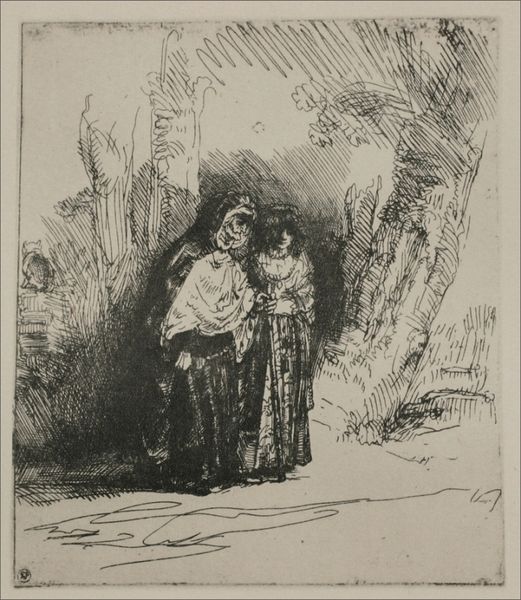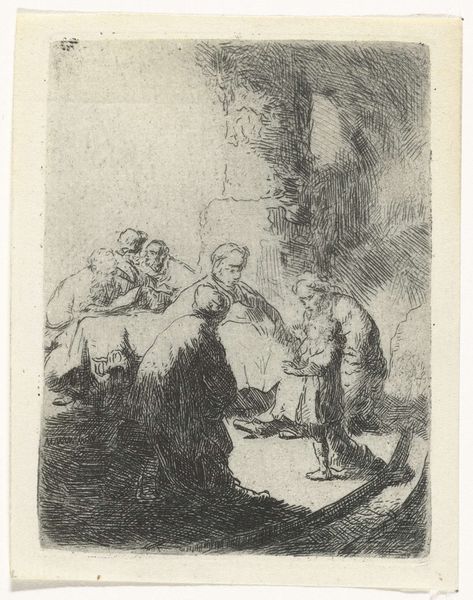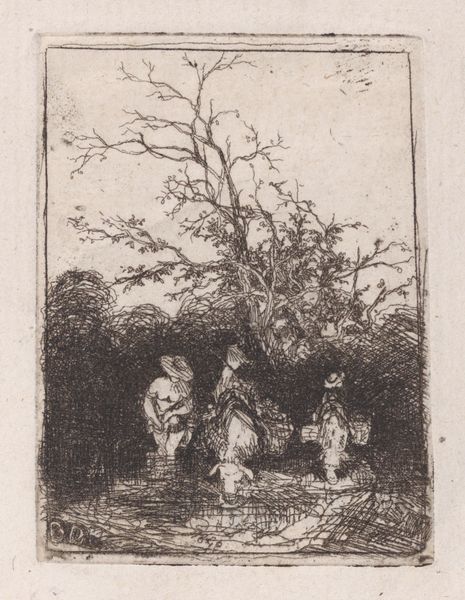
drawing, print, etching, ink
portrait
drawing
ink drawing
baroque
etching
landscape
figuration
ink
genre-painting
realism
Copyright: Public domain
Curator: Rembrandt van Rijn created this etching, "Beggar man and woman behind a bank," around 1630. Editor: It’s…grim. Stark. Those lines really dig into the destitution of the figures. Curator: Rembrandt was indeed interested in depicting everyday life, especially those on the margins of society. Prints like this served a vital purpose, circulating images and ideas widely at the time. Think of it as a 17th-century social commentary, reaching a broader audience than paintings could. Editor: The roughness of the etched lines, the sheer amount of ink used to depict the gnarled tree…it mirrors the harsh reality of their lives. The man's fur hat seems worn, his face weary; even the woman’s posture is slumped with hardship. I see this and think of the laborious process of printmaking—the grinding of pigments, preparing the plate, each pull from the press. Curator: Absolutely, and it’s crucial to remember that the creation of these images and their reception were influenced by specific cultural and political contexts. Images of beggars could evoke complex emotions, from pity to fear, reflecting social anxieties about poverty and order in Dutch society. Editor: Look at the way he uses line. So much crosshatching creates shadows and texture that just reinforce a sense of weight, the literal and figurative burden they carry. And the choice of etching—that bitten line feels more visceral than a smooth engraving ever could. The making really underscores the subject matter here. Curator: Rembrandt returned to these themes throughout his career. This piece tells us a lot about his interests in social issues and the visual language he developed to represent them. It reminds us that art doesn’t exist in a vacuum; it’s intertwined with the society that produces and consumes it. Editor: Agreed. Examining the material and process illuminates how Rembrandt wasn't just recording an image, he was crafting a statement through labor, ink, and the printing press, a statement about those often unseen in Dutch society. This close focus shows the skill and effort to tell a meaningful, though stark, story.
Comments
No comments
Be the first to comment and join the conversation on the ultimate creative platform.
